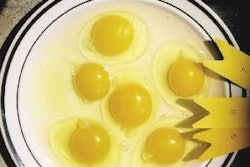In the wake of overseas bird flu problems and sharply higher prices for corn in 2006, the chicken industry started 2007 cautiously, reducing production by 2 percent in the first half of the year compared to the first half of 2006. Faced, however, with strong demand for all parts of the chicken and somewhat lower corn prices, the industry turned on a dime and is increasing production by 4 percent in the second half of the year. Given the unusually low production levels of the first half of 2007, production may well increase by 4 percent in the first half of 2008. Will this expansion prove to be too much, too soon?
Only time will tell if it is possible for the chicken industry to grow at a 4 percent rate between July 2007 and July 2008 and remain profitable. There are, however, two reasons to be optimistic: the rebound from bird flu worldwide and the behavior of beef prices.
Rebound from bird flu
In 2006, the world poultry industry suffered from a sudden drop in demand because of bird flu fears of consumers. In some countries, consumption dropped by 70 percent for a short time as consumers panicked. This year is different. Consumers are regaining confidence in chicken meat worldwide, and consumption is returning to pre-bird flu' levels.
As a result, prices in 2007 are significantly higher than 2006. For example, U.S. leg-quarter prices, heavily influenced by international demand, nearly doubled from the spring of 2006 to the spring of 2007 (25 cents per pound to 45 cents per pound). Brazilian whole-chicken prices increased from 45 cents per pound in early 2006 to 60 cents per pound a year later. The United Nations Food and Agriculture Organization index of poultry meat prices worldwide jumped 20 percent from early 2006 to early 2007.
Although strong international demand only directly affects the price of leg quarters in the United States, higher leg-quarter prices mean that the industry can withstand a lower breast meat price. In addition, the price of paws (thank you, China) and wings are both much higher. With all of the parts of the chicken higher in price this year, even a deboned breast meat price that seems low by historical standards may indeed be profitable.
Higher beef prices help
Historically, there has been a strong correlation between the price of beef and the price of chicken. Higher beef prices tend to pull up the price of chicken, and weak beef prices are a drag on chicken prices. This year, thanks to increased exports of beef and relatively low supply, beef prices are 25 percent higher than their average from 2001 to 2005. Exports of beef are likely to continue recovering and help maintain higher domestic prices.



.jpg?auto=format%2Ccompress&fit=crop&h=167&q=70&w=250)













